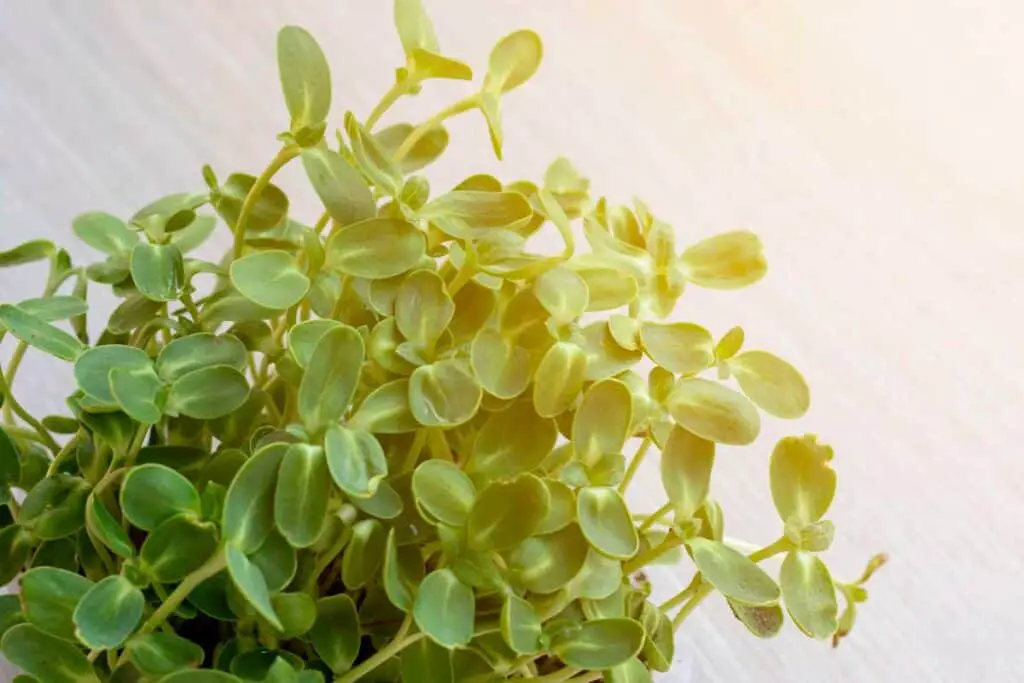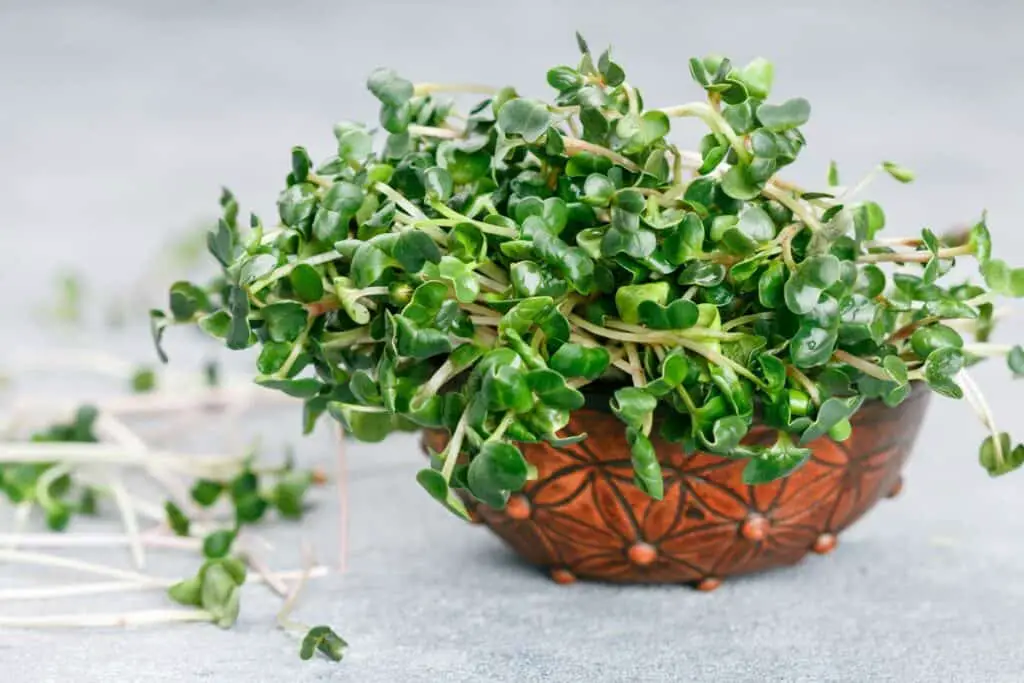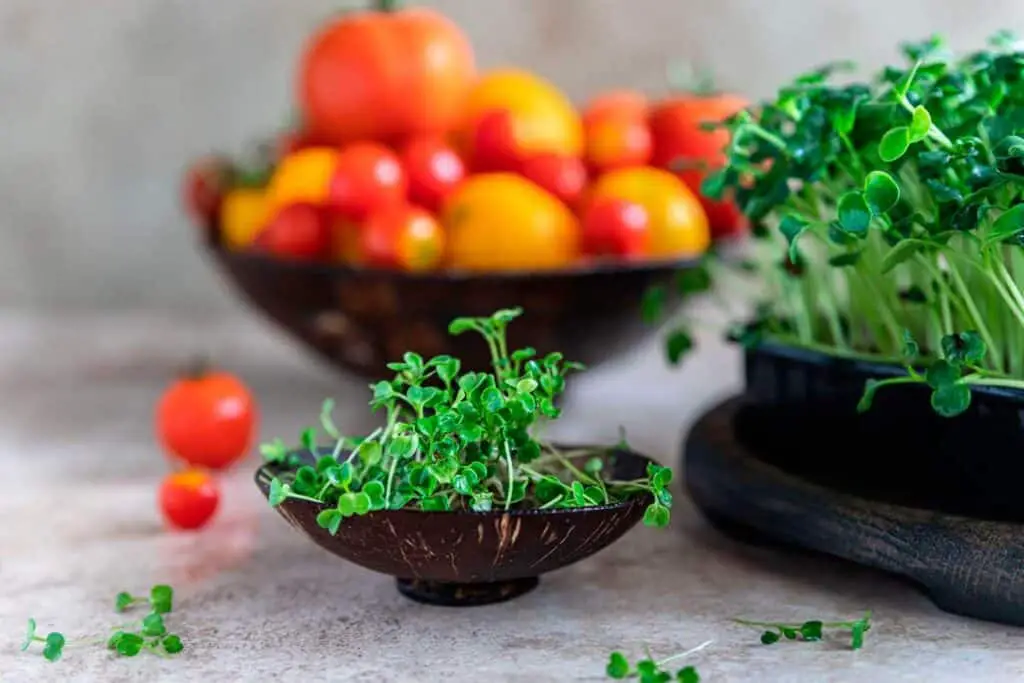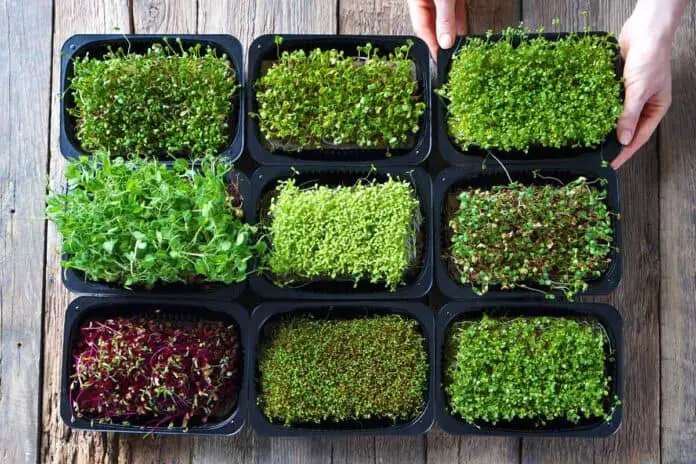Microgreens are getting more popular, especially with the health boom in recent years. They come in many varieties, from carrot microgreens to cabbage microgreens. The list goes on, and it virtually never ends! With so many to chose from, it’s not hard to question what the best microgreens for taste and health are.
The best microgreens for taste and health include sunflower, radish, and arugula. Each has its own distinct flavor that makes them stand out over the rest as well as many essential vitamins. The sheer variety of microgreens makes it tough to select the best microgreens for you. However, we will make it a bit easier with the guide we share below, explaining the best types of microgreens to eat.
The Best Microgreens For You
Microgreens are fantastic, especially with their diverse offerings, allowing you to choose what notes of flavors you want. Most microgreens taste pretty similar to their mature versions. For example, if you find yourself not liking carrots, you might want to avoid carrot microgreens.
Conversely, when you want another vegetable, like, for example, cabbages, there is a big chance that you will appreciate their microgreen version. Although that is undoubtedly the case, we need to note that taste is such a subjective trait that we may perceive a certain microgreen differently. What’s incredibly scrumptious for us may not be the same for you and vice versa.
Three Microgreens That Are As Delicious As They Are Healthy
- Sunflower Microgreens
- Radish Microgreens
- Arugula Microgreens
Sunflower Microgreens

The beautiful and ever-so-happy sunflower, a flower universally accepted as the “happy plant” for its bright colors and sun-loving personality, is a remarkable ornamental plant.
Many grow it for its beauty, but some people appreciate another aspect of the sunflower, its ability to become a tasty treat. Yes, many may be familiar with the sunflower seed treat or sunflower oil, but do you know that sunflowers also make awesome microgreens?
A more surprising fact is that the sunflower microgreen is on our list of one of the best types of microgreens out there. Aside from being eye candy, they are literal candies and, unlike sweet candies, are nutritious!
Sunflower microgreens have high nutritional value and lots of chlorophyll, which is said to be the “life force of the plant”. It may be able to help with increasing the flow of oxygen throughout one’s body. The Chlorophyll in this wonderful plant also assists with the counterbalance of pollution that we breathe. (Source)
Radish Microgreens

Radish microgreens are certainly not a surprise as they are most often a staple on microgreen dishes. One interesting fact to know is that radish microgreens are especially popular because of their ease of cultivation. They are relatively cheaper than other microgreens, which makes them more accessible for the average homeowner.
First of all, radish microgreens are quite an adventure, having notes of spice in them. So for those wanting to add microgreens to already spicy dishes, feel free to use radish microgreen as they enhance the flavor immensely while being super nutritious as well. Lacking black pepper? Add radish microgreens to the mix, enhancing not only flavor but the degree of spiciness at the same time.
While many recommend eating radish microgreens raw (yes, raw!), they are delicious as an exotic ingredient for your dishes. Other than being a fantastic ingredient, radish microgreens also offer extensive nutritional value. They are known as a “power microgreen”. For example, let us look at radish microgreen’s nutritional content. In a review made by the Journal of Food Science, we can see that radish contains numerous amounts of ascorbic acid, carotenoids, phylloquinone, and tocopherols, especially when compared to its mature counterpart.
Now take note of the ascorbic acid. According to the same journal, other types of radish microgreens have also been reported to contain significant amounts of ascorbic acid, namely the red radish, China rose radish, and ruby radish microgreens. If you don’t know what ascorbic acid is for, its function is essentially to aid in the development, growth, and repair of body tissues. (Turner, E.R., Luo, Y. and Buchanan, R.L., 2020)
Arugula Microgreens

Arugula is definitely for those wanting a twist in taste for their microgreens. Like the sunflower microgreen, it has a taste profile of nuts. However, arugula microgreens also have tangy notes, mixing the taste of pepper and earth notes into a single bite.
Arugula microgreens are fantastic additions for your pasta, soups, and even seafood! With arugula microgreens, you definitely won’t be disappointed. They are a great complement to so many dishes!
Arugula microgreens are incredibly healthy, even healthier than their mature counterparts. Arugula microgreens contain vitamins A, C, and K, completing your diet. Moreover, it is extensive in antioxidants as well.
Not only that, arugula microgreens are fantastic at promoting the lowering of blood pressure, making them excellent partners for those with cardiovascular concerns. Arogula is also high in nutrients like calcium and vitamin K, making it great for bone health. (source)
Frequently Asked Questions
One of the more common microgreens used by chefs is the Bulls blood beet. These microgreens are oval-shaped, slender, and have smooth green leaves and red undersides from time to time. Bulls blood beet microgreen is crisp and tender and has a taste that is a mix of earthy, mild, sweet with a touch of beet flavor and nuts.
The fastest-growing microgreens are Radishes at 7-15 days, turnups at 10-15 days, napa cabbage 10-15 days, red acre cabbage 10-15 days, broccoli 10-15 days, sesame 10-15 days, cress 10-15 days, lettuce 8-12 days and mustard at 10-15 days.
Have a look at our complete article about growing timeline and fast growing microgreens.
The kale microgreen is a superfood, to say the least. This little green is known as the most nutrient-based out of all the superfoods! The kale microgreen is said to have many health benefits and that little green holds up to four times the nutrients than the adult version of this superfood.
The kale microgreen is also as tasty as it is healthy. This microgreen superpower is slightly spicy with a wonderful earthy taste. You can’t go wrong with this microgreen. You can easily grow this microgreen at home, it’s fast and easy and very rewarding.
Microgreens can smell bad if they are left out for too long or if they are stored when not completely dry. If they are left wet, it will pretty much make them turn into a mash. To avoid stinky microgreens, keep them dry and eat them within the first few days of harvest.
Ready To Grow Your Own Microgreens?
To help you find and buy seeds, we have created a comprehensive list of seed suppliers around the world. It’s split into regions, which makes it easy for you to find a supplier that ship to your country.


